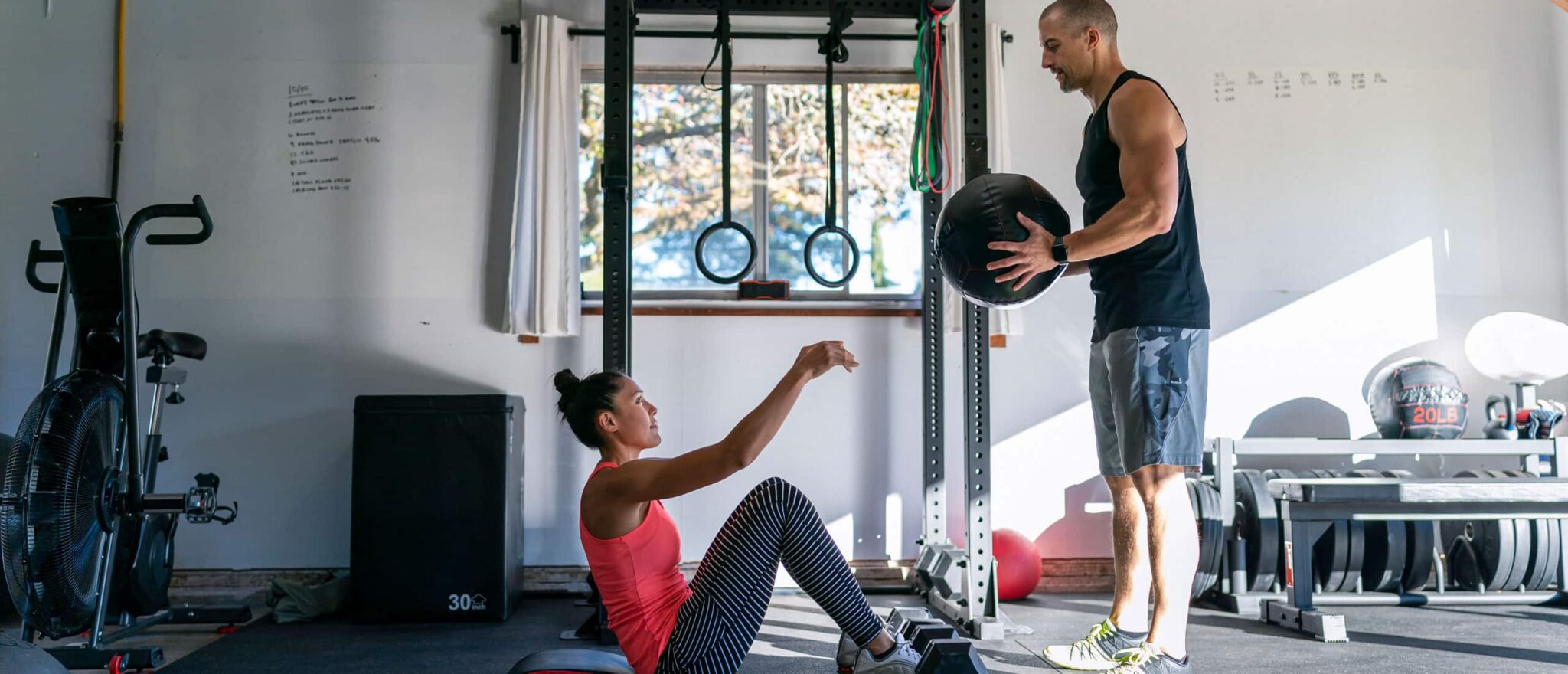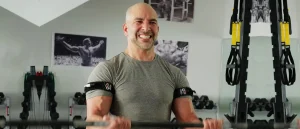Most of the time, the hardest part about working out is simply making it to the gym. Once you’re there, the motivation kicks in, and you usually wind up staying longer and doing more than you planned. But as Hone’s Community can attest, with zero commute time, your 30-minute sweat session can actually be done in half an hour. Plus, when your gym is physically in your home, it makes it a heck of a lot easier to talk yourself into going more often.
The biggest hurdles: not everyone has tons of space for fitness equipment, and it can get expensive if you’re starting from scratch. So we asked Ben Walker, founder, and certified personal trainer at Anywhere Fitness to run through how to build a home gym that leads to real gains without going broke.
Related: The Best Massage Guns You Can Buy
How to Choose Gym Equipment
“Every man needs equipment that is multi-purpose and can be used to train the entire body functionally (i.e. building strength for everyday activities),” says Walker. He recommends looking for pieces that work both the upper and lower body through all planes of movement. “This targets all of the primary and secondary muscle groups while improving your body’s ability to move and perform better.” Square footage is one of the main considerations when building a home gym, so it’s crucial to choose equipment that gives you the most bang for your buck in terms of versatility and space. All of the gym equipment below can help you get in an effective full-body workout in a relatively small footprint.How Much Does a Basic Home Gym Cost?
“Depending on your budget, you can expect to spend anywhere from $500-$2,500 on a home gym,” says Walker. A cable machine will probably be your biggest ticket item; models can run from $800-$2,500. But if you’re thrifty, scouring places like Craigslist and Facebook Marketplace can score you a setup for much less. And if having a gym in your garage will motivate you to get in a few more sweat sessions every week, the initial investment is easier to stomach. Here, the four most versatile and cost-effective pieces of equipment worth dropping cash on.1. Adjustable Dumbbells
Shop Adjustable Dumbbells
2. Adjustable Weight Bench
Shop Adjustable Weight Benches
3. Cable Machine
Shop Cable Machines
4. Compact Cardio Equipment
Jump Rope
A jump rope is a great alternative to a treadmill or stationary bike and has been found to have positive effects on heart rate and cardiovascular health, burning a similar total number of calories compared to running. While a regular no-frills jump rope works well, a smart jump rope could help increase your energy output and track your progress for added motivation and self-competition.Rowing Machine
If you prefer a traditional cardio machine, Walker recommends a rower, which provides a full-body workout and can be used in places with low ceilings, like a basement. “Within one repetition, you use every muscle group from your back, triceps, biceps, legs, and core. This burns an enormous amount of calories due to the sheer amount of energy needed,” he adds. Compact, foldable designs can be tucked in a corner when not in use.Shop Compact Cardio Equipment
Other Equipment to Consider
Shop Other Equipment










